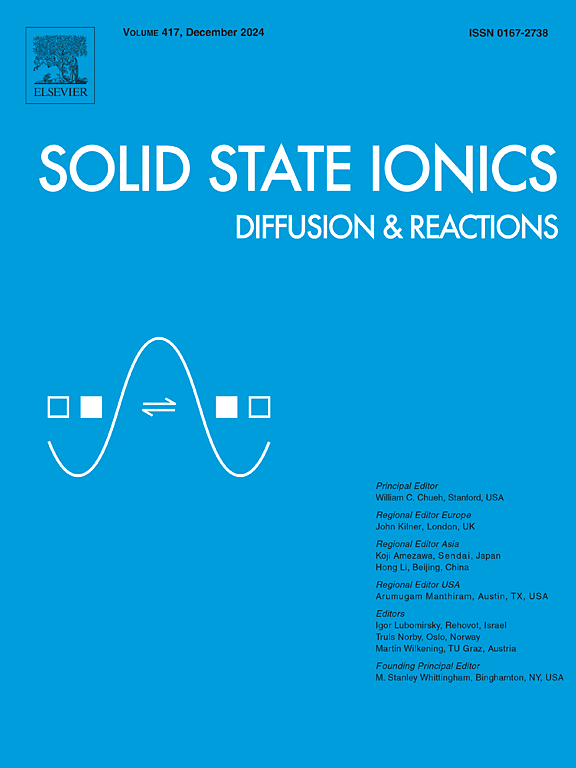Three-dimensional cross-linked interface with high ionic transference number and electrical conductivity for high-performance aqueous Zn-ion batteries
IF 3
4区 材料科学
Q3 CHEMISTRY, PHYSICAL
引用次数: 0
Abstract
Aqueous zinc-ion batteries (AZIBs) have been the subject of considerable research due to their safety and energy density, but these processes are constrained by the growth of dendrites and interfacial side reactions. Herein, a three-dimensional cross-linked polypyrrole and microcrystalline cellulose (PPy/MCC) composites are fabricated through the force of hydrogen bonding on the surface of zinc anodes. The distinctive cross-linking conductive network could enhance the Zn2+ transport process and storage, ensuring uniform charge distribution and further elevating the Zn2+ transference number. The abundant functional groups of PPy/MCC offer numerous zincophilic nucleation sites thereby promoting uniform zinc deposition. Additionally, the hydrophobic PPy/MCC coating acts as a barrier, shielding the zinc anode from the aqueous electrolyte and effectively inhibiting side reactions like corrosion and hydrogen production. Consequently, the zinc anode coated with the PPy/MCC layer (PPy/MCC@Zn) achieves steady and reversible Zn cycling. The PPy/MCC@Zn//PPy/MCC@Zn symmetric batteries harvest a long cycling stability exceeding 3400 h at a current density of 1 mA cm−2, 1 mAh cm−2. The PPy/MCC@Zn//Cu battery achieves a remarkable average Coulombic efficiency (CE) of 99.48 % at 2 mA cm−2, 2 mAh cm−2. The practical full battery, coupled with the I2- activated carbon (AC) cathode, also demonstrates stable performance over 4000 cycles.

求助全文
约1分钟内获得全文
求助全文
来源期刊

Solid State Ionics
物理-物理:凝聚态物理
CiteScore
6.10
自引率
3.10%
发文量
152
审稿时长
58 days
期刊介绍:
This interdisciplinary journal is devoted to the physics, chemistry and materials science of diffusion, mass transport, and reactivity of solids. The major part of each issue is devoted to articles on:
(i) physics and chemistry of defects in solids;
(ii) reactions in and on solids, e.g. intercalation, corrosion, oxidation, sintering;
(iii) ion transport measurements, mechanisms and theory;
(iv) solid state electrochemistry;
(v) ionically-electronically mixed conducting solids.
Related technological applications are also included, provided their characteristics are interpreted in terms of the basic solid state properties.
Review papers and relevant symposium proceedings are welcome.
 求助内容:
求助内容: 应助结果提醒方式:
应助结果提醒方式:


